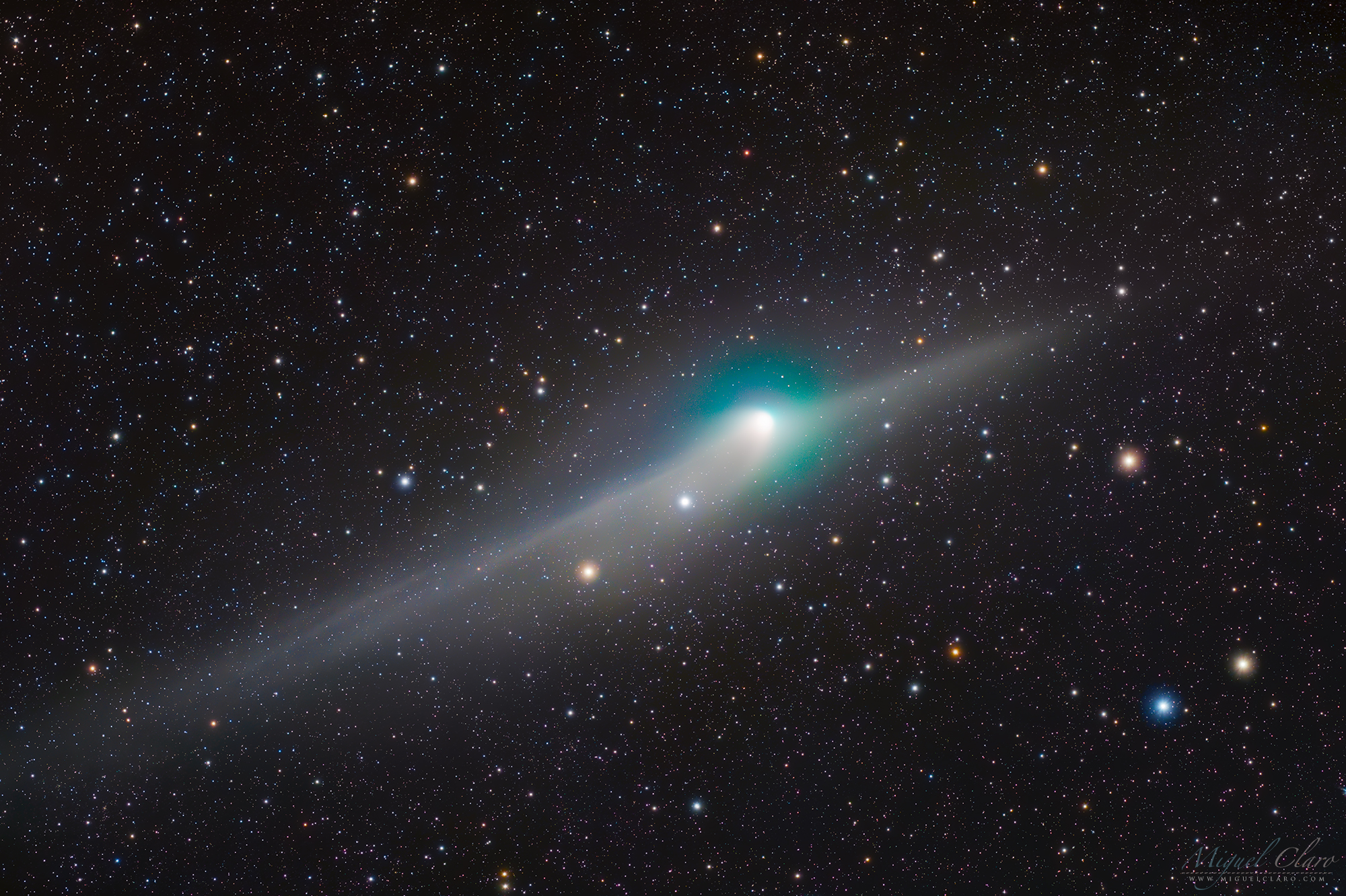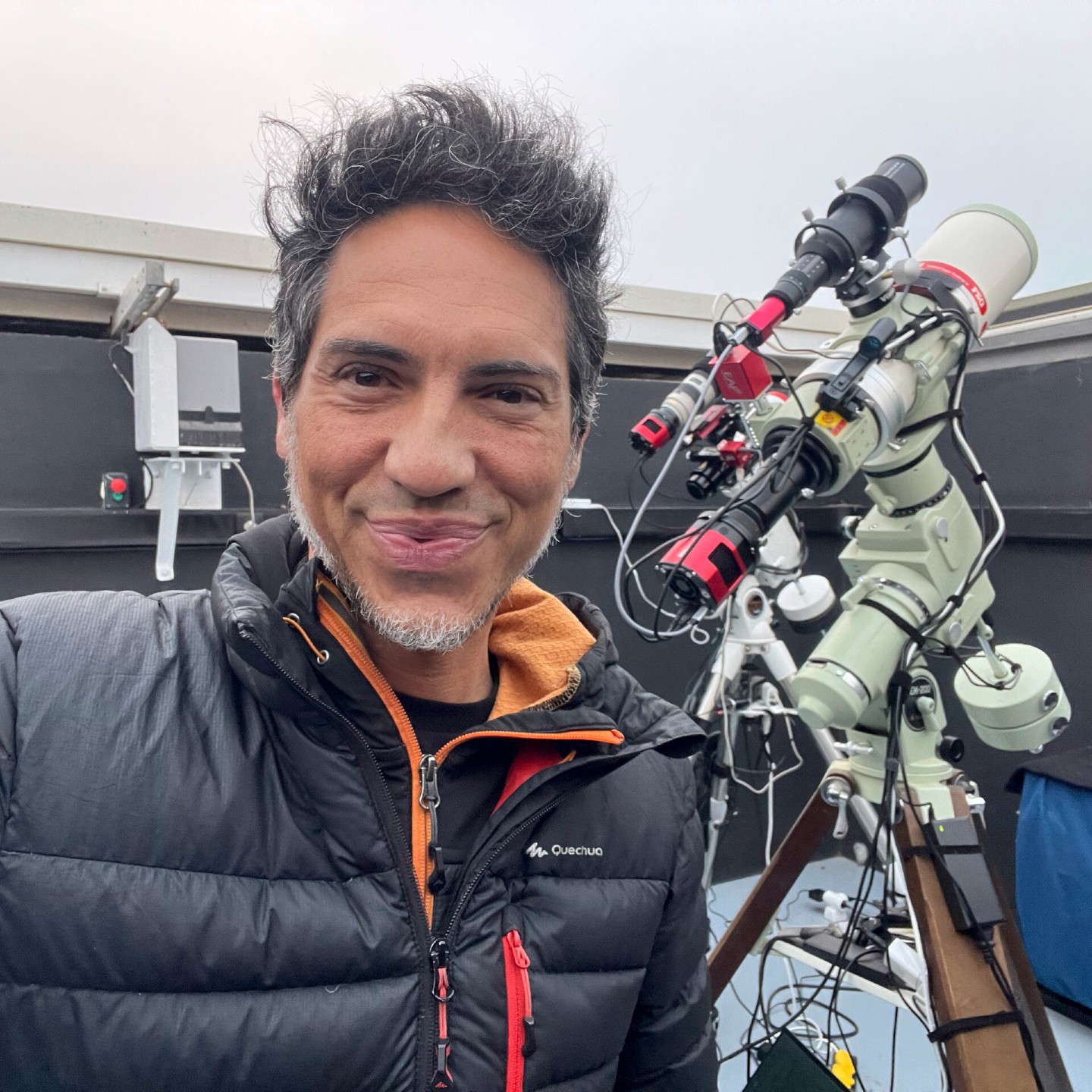Green comet flaunts its tail in dazzling deep space photo
Comet C/2022 E3 (ZTF) continues to treat skywatchers.
Miguel Claro is a professional photographer, author and science communicator based in Lisbon, Portugal, who creates spectacular images of the night sky. As a European Southern Observatory Photo Ambassador and member of The World At Night and the official astrophotographer of the Dark Sky Alqueva Reserve, he specializes in astronomical "Skyscapes" that connect both Earth and the night sky. Join Miguel here as he takes us through his photograph "Comet E3 ZTF Showing the Tail in Perspective and Immersed in a Colorful Starfield."
This image shows a close-up view of comet C/2022 E3 (ZTF) on Jan. 22, 2023 immersed in a colorful starfield.
Aside from featuring a wonderful greenish coma from the glowing carbon gas being emitted from the comet, the image reveals a rare anti-tail due to the fact that planet Earth was crossing the orbital plane of C/2022 E3 (ZTF), allowing us to see the anti-tail in perspective.
The comet was photographed late in the night at a distance of 42 million miles (67 million kilometers) from Dark Sky Alqueva Observatory in Portugal. This long-distance traveler from the outer solar system hasn't been seen this close to Earth in 50,000 years, and is moving fast against the background starry sky in this image.
Related: Watch a green comet make its first Earth approach in 50,000 years today with this free webcast
Read more: How to view and photograph comets

Looking for a telescope to see comet C/2022 E3 ZTF? We recommend the Celestron Astro Fi 102 as the top pick in our best beginner's telescope guide.
On the night the image was taken, the comet was located close to constellation Draco, the Dragon, and showed a faint visual magnitude of +6.3. On Wednesday (Feb. 1), the comet will be at its closest point to our planet (known as perigee) and could eventually reach a naked eye magnitude in some locations.
This image was captured using a Takahashi FSQ-106ED telescope with an F5 focal ratio on an EM200 mount, which was auto-guided by a Asiair Pro wifi camera controller. My camera for this image is a modified Nikon D850 DSLR camera set to ISO3200.
Breaking space news, the latest updates on rocket launches, skywatching events and more!
This image was produced by combining 40 separate exposures that were captured for 200 seconds each. Total integration time was 130 minutes. Post-processing was completed in PixInsight 1.8.9-1 and Photoshop CC 2023.
Want to see comet C/2022 E3 (ZTF) up close or try to take your own comet or night sky photos? Be sure to see our guides on the best telescopes and best binoculars that can help. Don't forget to also check out our guides on how to view and photograph comets, as well our best cameras for astrophotography and best lenses for astrophotography to get started.
To see more of Miguel Claro's work, please see his website or follow his stories on Instagram at www.instagram.com/miguel_claro .
Editor's Note: If you snap your own photos of comet C/2022 E3 (ZTF) and would like to share them with Space.com’s readers, send your photo(s), comments, and your name and location to spacephotos@space.com.
Follow us @Spacedotcom, or on Facebook and Instagram.
Miguel Claro is a professional photographer, author and science communicator based in Lisbon, Portugal, who creates spectacular images of the night sky. As a European Southern Observatory photo ambassador, a member of The World At Night and the official astrophotographer of the Dark Sky Alqueva Reserve, he specializes in astronomical skyscapes that connect Earth and the night sky.


